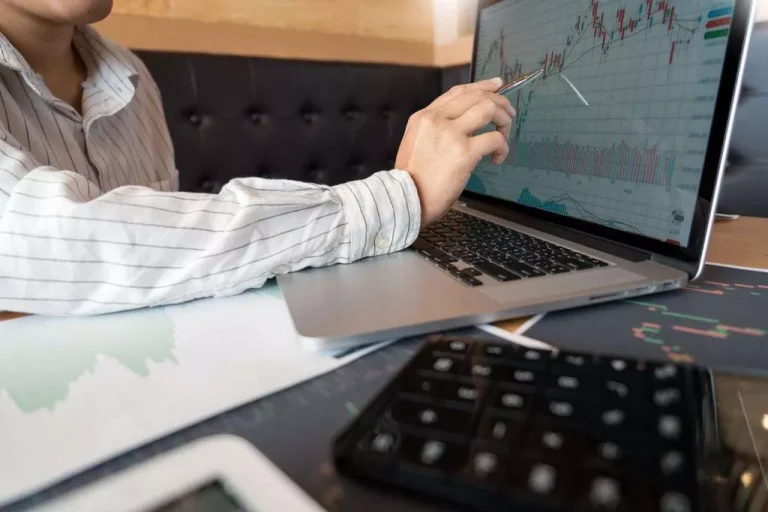Content
Scan your news feeds and keep up with the forex grapevine for any issues or tidbits https://www.xcritical.com/ that might look like the next market-mover for the major currencies. Movements of government bonds, equities, and even big mergers and acquisitions (M&A) flows can also influence the price of the major currencies. The Forex screener tool on TradingView offers a combined overview of many technical tools and indicators on the same screen. It allows traders to view multiple indicator readings, which may help them make more informed decisions.
How To Trade Alternatives To Forex
Emotional discipline helps you prevent costly mistakes and ensures you make decisions based on analysis rather than emotions. The USD/TRY pair remains extremely volatile due to Turkey’s ongoing economic struggles, including high inflation, currency depreciation, and political instability. Recent shifts in Turkey’s economic policy, such as changes in interest rates and government interventions in the currency market, have led to rapid fluctuations forex volatility in the Lira’s value. GBP/AUD is another volatile pair, driven by the economic conditions and policies in both the UK and Australia.
Volatility trading guide: its causes and the most volatile markets
An example of volatility in the market includes the 2008 financial crisis, when the mortgage bubble burst, triggering massive volatility in financial markets globally. On the other hand, currency Cryptocurrency exchange pairs with negative correlation can exhibit higher volatility. When two currencies are negatively correlated, they tend to move in opposite directions. This can create more significant price swings and increased volatility in the currency pair.
The 2024 election underscores the complex interplay of political events
This is because when one currency strengthens, the other currency in the pair also tends to appreciate, leading to relatively stable price movements. For traders seeking a more stable trading environment with lower risk exposure, major currency pairs offer an attractive option. However, trading in low-volatility pairs requires a different approach and mindset to maximize potential gains. Traders use implied volatility to price options, determine possible levels of support and resistance on a statistical basis and to measure the future risk of market swings.

- This volatility, acting as the lifeblood of the currency markets, propels exchange rates to climb and plummet daily, presenting both prospects and challenges for traders and investors.
- Below we will go over what volatility is, and how to trade with this phenomenon in the forex market.
- It’s important to be aware of the context of your trades, and understand the past performance is no guarantee of future price movements.
- High volatility in investment assets indicates higher risk when buying, selling, or holding financial assets.
- Historical volatility is measured by calculating the annualized standard deviation of daily asset price returns over several trading days.
- The increased volume in a volatile market assures the trader that there is enough momentum to facilitate trend continuation.
While most financial markets experience intraday movements, higher volatility markets – such as forex – see a much greater speed and degree of change. In the face of greater volatility, we will find greater trading risk, but also more opportunities for traders as price movements become greater. Forex traders utilize volatility as a key factor in making trading decisions by incorporating it into their trading strategies and risk management. Traders try to understand when volatility will increase or decrease in the forex market to modify their trading positions for the expected volatility impacts and avoid unpredictable market conditions. Historical volatility is a statistical measure of the magnitude of price changes of a financial instrument, such as a currency, stock, or bond, over a defined historical period. Historical volatility is measured by calculating the annualized standard deviation of daily asset price returns over several trading days.
Additionally, adjusting the size of your trades based on the level of volatility can help manage risk. For example, Bollinger Bands can show how much a currency pair deviates from its average price, giving you insight into potential breakouts or reversals. ATR, on the other hand, measures the average range of price movement over a specified period, offering a sense of how much a pair typically moves on a given day. Volatile forex pairs are often influenced by economic events, geopolitical developments, and changes in market sentiment.
These can help you make better decisions, based on your past performance, as well as how prices are moving in certain markets. In addition, with FOREX.com you can trade gold, silver, and other metals by opening a position with CFDs. One of the main risks observed in the market is that high inflation and rising interest rates could trigger a recession. High interest rates make it difficult to obtain credit and make existing services even more expansive, stifling economic growth. Position sizing and using stop-loss orders protect the trader from excess losses due to violent price spikes during actively volatile sessions, e.g., during news releases.
As traditional safe-haven assets, gold and silver can help you diversify your investments and protect you from inflation. The US dollar is the world’s reserve currency and the currency of the world’s largest economy, making it a powerhouse in the foreign exchange market. Although US inflation is not stopping at the expected speed, the US currency presents a kind of refuge from other international currencies today.
Historical volatility allows traders to evaluate the potential risk involved with an asset and helps investors develop trading strategies based on historical volatility data. Forex traders combine historical volatility with indicators such as technical analysis to make reliable forecasts on future price movements. Volatile currency pairs in Forex trading are the subject of keen interest for traders seeking potential opportunities in a dynamic market. Understanding and capitalizing on currency pair volatility can lead to rewarding trading experiences. In this comprehensive guide, we will explore various Forex trading strategies specifically tailored to the most volatile currency pairs, empowering traders to navigate high-risk trading scenarios effectively. Traders must understand the factors influencing volatility, use appropriate risk management strategies, and choose suitable tools and techniques to navigate the forex market successfully.
Please note, placing contingent orders does not necessarily limit your losses to the expected amount, as market conditions may prevent you from executing such orders. Well, whether you’re a newbie or a seasoned trader, understanding volatility can shape your trading adventures. Taking a position on the VIX can give a direct exposure to market sentiment and provide insights into key turning points in the market. When the VIX is high, it’s usually a sign that the market is about to have a bullish run, and when the VIX is low, it’s taken as a bullish indicator. Readings below 12 indicate a low volatility environment, between 12 and 20 indicates normal levels of volatility, and any readings above 20 are seen as a signal of high volatility. Traders with an interest in forex may want to consider currency ETFs, which track the performance of a single currency against a basket of currencies.

The economic calendar in currency trading affects market volatility by creating uncertainty among traders and investors, increasing trading activity and increasing volatility. Forex traders monitor economic calendars closely, waiting to see if the actual data released differs from the expected consensus figures from market analysts. Scalpers and day traders use the news and economic calendar feature to identify periods of heightened volatility in the trading day. Most of the top forex broker platforms provide an economic calendar to prepare traders for major announcements like Non-Farm Payrolls (NFP) and Central Bank meetings, which increase market volatility significantly. Traders and investors measure current volatility by determining the highest and lowest prices traded during a trading session, forming the intraday price range. Real-time updates on current volatility are accessible on volatility indexes like the VIX (Volatility Index).
These currency pairs belong to the most developed economies globally, offering a secure trading environment and attracting significant trading volume. As a result, they tend to exhibit lower volatility compared to their more adventurous counterparts. While lower volatility implies less risk, it also means potentially lower rewards for traders seeking high-profit opportunities. Buy-and-hold investors may prefer the stability offered by blue chip organizations as an alternative to trading volatile currency pairs, though many traders look for smaller companies since they can offer more growth potential. In the ever-evolving sphere of forex trading, there remains a constant element—volatility’s unyielding presence. This volatility, acting as the lifeblood of the currency markets, propels exchange rates to climb and plummet daily, presenting both prospects and challenges for traders and investors.
While high volatility can offer increased trading opportunities, it also comes with greater risk. By carefully analyzing market conditions, employing proper risk management, and adapting to changing volatility levels, traders can increase their chances of success in the dynamic and ever-changing forex market. While the forex market is generally more volatile than the stock market, it is important to note that volatility levels can vary within each market.